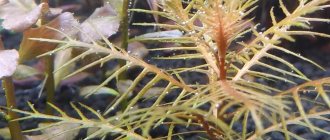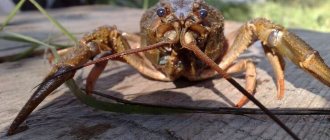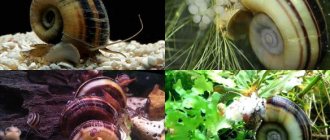The habitat of communities consisting of populations of several species.
Amazon rainforest biotope
Biotope
is an area of uniform ecological conditions that provide a living place for a specific assembly of plants and animals.
Biotope
is almost synonymous with the term
habitat
, which is more commonly used in English-speaking countries.
However, in some countries these two terms are different: subject of habitat - population, subject of biotope - biocenosis
or
biological community
. [1]
It is an English loanword derived from the German Biotop
, which in turn came from the Greek
bios (meaning "life")
and
topos (meaning "place")
.
(The related word geotope came
into English the same way, from German
Geotop
.)
Ecology [edit]
The concept of a biotope was first proposed by Ernst Haeckel (1834-1919), a German zoologist known for his theory of recapitulation. In his book General Morphology
(1866), which defines the term "ecology", he emphasizes the importance of the concept of habitat as a prerequisite for the existence of an organism. Haeckel also explains that in one ecosystem, its biota is shaped by environmental factors (such as water, soil, and geographic features) and interactions between living things; The original idea of the biotope was closely related to evolutionary theory. Following this, Professor of the Berlin Zoological Museum F. Dahl called this ecological system a “biotope” (biotope) (1908). [2]
Components
A biotope is formed through the complex interaction of a large number of abiotic factors that serve as support for the matrix of life in the ecosystem. The main components are the medium, the substrate and environmental factors.
Facilities
This is the question in which the biocenosis is immersed. At the same time, living organisms move and perform their functions.
The main means are air and water. However, there are very specific remedies, such as mammalian intestines. This forms an ecosystem with a biocenosis of bacteria, fungi and protists, and the environment is the pericellular and cellular contents of the intestinal tract.
Substrate
This is the question of why living things settle in an ecosystem. The most common is soil, but in the case of many aquatic biotopes, water is both intermediate and substrate.
Environmental factors
Life can only exist within a certain range of environmental conditions, and each organism has optimal functioning adapted to each abiotic factor. Thus, this biotope has a dynamic balance of abiotic factors, which allows this biocenosis to exist.
Among the environmental factors we have the following:
Solar radiation
The level of solar radiation and its quality affect the community of living beings that can exist in the biotope. Solar radiation deficiency limits bioproductivity and affects the food web.
water
If humidity is limited in a given area, only a certain biocenosis can develop. On the other hand, the aquatic environment determines a biocenosis that is different from the terrestrial environment.
temperature
The range of temperatures at which living things can perform their basic functions is limited. Above a certain limit, most proteins are denatured.
At high temperatures, the number of species that can be part of the biocenosis is very small (only thermophilic archaebacteria). At the other extreme, when the temperature is very low, living things that can survive are also scarce.
Chemical composition of the medium and substrate
Plant species and soil biota respond to the chemical composition and physical and pH characteristics of the substrate within a certain range.
In water, salinity and pH are the determining factors. Another important element is the proportion of gases that make up the air in a given biotope.
weather
It is critical to determine the diversity of species that may live in a given area. In a temperate zone biotope subjected to a four-season regime, the biocenotic characteristics are very different from those of the warm tropical regime.
relief
The physical form of the land influences other environmental factors. Temperature decreases with altitude, and runoff and the presence of water in the subsurface depend on the slope.
For example, masses of air rise when they hit a mountain and thicken as they rise, creating clouds and orographic rain. This determines very specific environmental factors, such as high humidity, which contributes to the development of a certain biocenosis.
Biotope restoration[edit]
Although the term "biotope" is considered a technical word in relation to ecology, in recent years the term has been increasingly used in administrative and social activities. Since the 1970s, the term "biotope" has received much attention as a keyword throughout Europe (mainly in Germany) for the conservation, restoration and creation of natural environments. [3] Used in this context, the term "biotope" often refers to a smaller and more specific ecology and is very familiar with human life. Especially in Germany, biotope regeneration activities are received with enthusiasm. These activities include −
- making roof gardens,
- reconstruction of rivers to restore their natural qualities,
- leave bushes or trees on farms,
- construction of natural parks along the Autobahn highway,
- creation of school gardens or ponds taking into account the ecosystem, and
- taking into account environmental considerations in private gardens.
Various sectors are involved in this activity, including architecture, civil engineering, urban planning, transport, agriculture, river engineering, limnology, biology, education, horticulture and home gardening. In all areas, all sorts of people are looking for a viable way for people to respect other living beings. The term "biotope" will include a complete ecological approach. [4]
Differences from habitat, biocenosis and ecological niche
All areas of the planet occupied by living beings make up the biosphere. It works as an integrated system, but in practical terms it is divided into smaller units.
The largest units are biomes, defined by general climate characteristics. In turn, biomes are divided into ecosystems with different communities consisting of populations of different species.
An ecosystem is the interaction of a biotic community (a collection of living beings of different species) with its abiotic environment.
There are several ecosystem-related concepts that relate to different levels of organization. In some cases, the terms may be confused, so it is necessary to establish the difference between the two.
Biotope and hABITAT
Habitat refers to the geographic area occupied by one or more populations of a particular species. Although in some cases the term biotope has been used as a synonym for habitat, these are different concepts.
The concept of biotope refers to the geographical area where a community (a collection of populations of different species) develops. That is, a biotope includes many habitats.
For example, in a tropical rain forest we may find a species of monkey whose habitat is the treetops, in the upper canopy of the forest, while the jaguar has a habitat in the understory (the forest floor). Both species exist in different habitats, but coexist in the same biotope - rain forest.
Biocenosis and biotope
Ecosystems are shaped by communities of living things, the relationships among them, and their relationships with the physical environment.
Biocenosis is a living part of an ecosystem. It consists of all species that form populations, which in turn group into communities. This involves symbiotic relationships between different populations and between communities.
Instead, as mentioned above, a biotope is the physical environment in which these communities develop.
Biotope and ecological niche
Another term that is confused with the term "biotope" is the term "ecological niche". However, this category refers to species, not communities.
It refers to the functional relationship of a species with the community of which it is a part. It includes all the adaptations of that species to its environment, especially with regard to the place it occupies in the food web of the ecosystem.
Characteristics[edit]
The following four points are the main characteristics of biotopes. [5]
Microscale[edit]
A biotope is not usually considered a large-scale phenomenon. For example, a biotope could be a nearby park, a back garden, even indoor plants or an aquarium on the porch. In other words, biotope is not a macroscopic, but a microscopic approach to preserving ecosystems and biodiversity. In this way, biotopes fit into the daily activities and lives of ordinary people, and more and more people can take part in the creation of biotopes and their ongoing management.
Biotope networks [edit]
It is usually emphasized that biotopes should not be isolated. Instead, biotopes must be connected to each other and to other surrounding life, because without these connections to life forms such as animals and plants, biotopes would not function effectively as places in which various organisms live. Thus, one of the most effective strategies for biotope regeneration is to plan the site
biotopes, not just
a point
where animals and plants come and go. (This route of organic movement is called a corridor.) In the stretching method, the center of the network will be large green areas of land: a forest, a natural park, or a cemetery. By connecting pieces of land to small patches of biotopes, such as greenbelts along a river, city parks, gardens or even roadside trees, biotopes can exist in a network. In other words, a biotope is an open system, not a closed system, and this is a feasible strategy.
Daily life of a person[edit]
The term "biotope" does not apply to biosphere reserves, which are completely separated from humans and become an object of human fascination. On the contrary, it is an active part of a person's daily life. For example, a decorative flower bed can be considered a biotope (albeit a rather small one), since it expands the possibilities of everyday life. An area that serves multiple functions, such as space for human habitation, and is home to other living things, whether plants or animals, can be considered a biosphere reserve.
Artificial [edit]
When artificial objects are introduced into a biotope's habitat, their design and placement are of great importance for the regeneration of the biotope. Planting trees on uneven surfaces leads to the emergence of seedlings and nesting of small insects. A rug or mesh made from natural fibers will gradually degrade when exposed to weather conditions. Thus, in a biotope there is no binomial opposition between natural and artificial. Or rather, such artificial materials are widely used.
examples
Terrestrial biotopes
Cloudy mountain rainforest
The biotope of this ecosystem has a decisive influence on latitude and relief (height). They are located in the intertropical zone at an altitude of 800 to 2500 meters above sea level.
They are exposed to moist air masses that condense and fog as they rise. They have high relative humidity and, due to the altitude, temperatures are relatively low. Another feature associated with the relief is the presence of steep slopes, so the substrate is shallow.
This biotope supports one of the most diverse biocenoses on the planet. There are a large number of species with different habitats and occupying abundant ecological niches. Additionally, there are numerous complex symbiotic relationships between organisms.
Warm dry thorns
Unlike cloud forest, thorny thorn or warm thorn scrub consists of a biotope in relief that is mostly flat.
It usually has sandy soils, with little organic matter and low fertility. Daytime temperatures are high and nighttime temperatures are low, and only a short period of rainy and low precipitation occurs.
Germany [edit]
This is especially true in Germany, which is the birthplace of the term "biotope", where authorities take the initiative to conserve biotopes, maintaining consistency with urban or rural planning and taking into account the history and landscape of the region. [6]
Legal basis[edit]
The Federal Nature Conservation Act (Bundesnaturschutzgesetz or BNUM, since 1976) requires that wild animals and plants and their communities be protected as part of an ecosystem in a particular diversity that has grown naturally and historically, and their biotope and other living conditions must be protected, preserved, developed and restored. (No. 9, clause 1, art. 2). The law also requires that certain types of habitats, full of a certain diversity, not be affected by development. So, there is a law that requires the protection of biotopes. There is also a provincial law that corresponds to the federal one. At that time, such a development was rare.
Landscape plan[edit]
Many German states are required by law to produce a landscape plan (Landschaftsplan) as part of their urban planning, although these plans vary somewhat from place to place. The purpose of Landschaftsplan is to protect the environment and landscape of the region. These plans use text and pictures to describe the current state of the environment and proposed measures. They take into account, for example, the regional location of land, climate, wind direction, soil, groundwater, biotope type, distribution of animals and plants, welfare of residents and competition with development projects.
Civic welfare[edit]
Biotope conservation in cities also places emphasis on recreation and recreation for citizens and improving the urban environment. For example, in the Karlsruhe nature reserve in Baden-Württemberg, people can cycle on a bike path or walk their dog, although it is prohibited to collect plants and animals or walk in the exclusion zone. At the heart of biotope conservation is the idea that if civic life is surrounded by rich nature, rooted in local history and culture, it is enhanced by protecting nature and preserving the landscape.
Biotope protection in Sweden
Another European country that attaches great importance to the conservation of biotopes is Sweden. The state's decision to protect the most vulnerable habitats is consistent with obligations under the United Nations Convention on Biological Diversity and the implementation of national environmental obligations set by parliament. There are seven main habitats that are permanently protected by the Swedish government. These include tree lines, rock fences, willow banks, springs, wetlands, rock piles, small shrubs and tree stands found in agricultural regions.
All habitat areas in Sweden are smaller than 20 ha. Sweden understands the great importance of a biotope in the development of plant and animal biodiversity and therefore invests in improving and protecting these natural places. The seven permanently protected habitats are at greatest risk of collapse due to recent land use trends, despite their importance to many species.
In addition to the seven types of habitats protected by the Swedish government, there are dozens of other habitats that are protected by various institutions and administrations, including 19 habitats protected by the Swedish Forestry Agency and about 16 protected by local authorities and municipalities.
Aquarium [edit]
The term "biotope" is also used by aquarium hobbyists to describe an aquarium that attempts to mimic the natural habitat of a particular group of fish. The idea is to replicate conditions such as water parameters, natural plants, substrate, type of water (fresh, salt or brackish), lighting, and also include other native fish that typically live together in nature and, as such, represent specific real world. biotope. An example of one South American type of biotope might be a "Forest stream tributary of the Rio Negro near Barcelona, Brazil" with many branches, twigs, roots, leaf litter, light sandy substrate, tannin colored water and dim lighting with floating plants, along with Nannostomus eques
,
Paracheirodon axelrodi
,
Hemigrammus bleheri
and
Dicrossus filamentosus
. Note that "South America" itself is not a biotope, as South America contains hundreds of different biotopes in different regions, rivers, etc.
How to create an Amazon River biotope
Author: admin05.25.2017, 08-40 The Amazon River biotope is one of the most popular options when arranging a themed aquarium. This exciting activity, when done correctly, will expand your knowledge and introduce you to the ecology of one of the most fascinating places on earth. Although maintaining a real tropical aquarium may seem like a daunting task, beginners have nothing to fear if they do their research thoroughly and make the right choice of decorations and fish. With this approach, recreating the Amazon biotope will not be difficult.
So, let's start creating a themed aquarium
Despite the apparent complexity of the natural conditions of the Amazon, they can be recreated with ease. Practicality plays a big role when it comes to reliably accurately reproducing the biotope: in addition to other factors unfavorable for the aquarium, the Amazon River is full of predators, leeches and parasites. Thus, compromises will have to be sought.
The problems aren't limited to aquatic predators: dark, murky water makes visibility difficult, and the bottom, with a thick layer of silt, is difficult to clean. This will not only leave your aquarium empty and devoid of vegetation due to lack of sunlight, but will also prevent you from admiring your fish. You should not try to recreate a completely identical aquarium biotope. You can achieve significant success in setting up such an aquarium with a reasonable combination of effective design and environmental compliance. The best thing to do is to select images of the Amazon biotopes on the Internet that you like best, and then work on bringing them to life. Once you have a clear idea of the desired landscape, it is time to get acquainted with three main approaches to creating it: - Initially, decide what kind of fish you like, find out in which part of the Amazon River it lives, study the biotope that it will do; — Select a specific part of the river to simulate; fill it exclusively with those species of fish that live in the area; - Start with plants, botanicals and substrate, and build your aquarium from bottom to top; Any of these approaches will help you successfully create an aquarium with the Amazon biotope. You just need to decide where to start, make a list of everything you need and start searching for materials.
Varieties of biotopes of the Amazon River
Due to the large length of the river, there are several options from which you can choose what is suitable for your aquarium. Some habitat options will be different from others, and will be better suited to certain types of flora and fauna. Here are some of the options: • “white river” biotope - this type of environment is characterized by slightly turbid water. White water aquariums will look better with driftwood and dead branches, as well as with a dark sandy substrate. • “black river” biotope - waters that originate in tropical forests and contain a lot of tannins and humic acids are usually called black water. Such water is characterized by high acidity due to the leaves, fruits and wood that have fallen into it, which you will need to add or even use as a substrate. • oxbow biotope - this term refers to the many crescent-shaped lakes that form when the Amazon River changes direction. Such lakes are muddy and filled with fallen leaves. For this reason, sludge can be considered an ideal substrate. Owners of the oxbow biotope need to reduce filtration to a minimum.
How to imitate Amazon water
The acidity of the water in the Amazon River biotope aquarium will vary depending on which of the three options above you choose. Living conditions in the “white river” imply a water pH level ranging from 6.3 to 7.0, while the “black river” biotope is characterized by high acidity - from 4.5 to 6.5, in the “oxbow lake” biotope the pH level will be between 5.4 and 6.8. The temperature in different types of Amazon biotope does not vary so much, the range is from 24 to 28 ° C. The water should be moderately soft, because... Most of the dissolved substances in Amazon waters are not mineral, but organic: hardness values between 3 and 8 will be ideal. To give a characteristic amber color to the waters of the Amazon biotope, as well as create the same comfortable conditions for fish as in the natural environment, botanical products that release large amounts of tannin into the water should be used. The Amazon leaves, often found in nature, are suitable for such purposes: almond, teak, beech, magnolia and guava leaves. Creepers and coconut peel will do.
The basic idea is to pollute the water with these leaves in order to give it a unique brown hue, inherent to varying degrees in each Amazon biotope. The other main element of your biotope will be peat. Peat can be purchased at aquarium and pet stores. It is necessary to obtain the required level of organic matter in the water and recreate the correct biotope of the Amazon River. If you want to get the maximum benefit from adding peat, it is not recommended to use it when using activated carbon filtration or when applying water-soluble medications to your fish. Peat is a unique element of the Amazon natural environment, and also an element that cannot be neglected when creating a biotope. Your biotope aquarium must contain peat. If the water becomes too clean after replacement, it is also necessary to add peat to it after boiling it.
Populating a biotope aquarium
Typical representatives of the Amazon River:
- Angelfish;
- Brown Discus;
- Red neon;
- Ramiresi Apistogramma;
- Catfish Corydoras;
- Piranha;
- Tetra - penguin;
- Royal Panak;
- Cichlazoma meeca;
The Amazon River is home to a huge number of species, and some are more adaptable to aquarium conditions than others. You will want to choose species that do not prey on each other and can live in relative harmony in the aquarium. When it comes to Amazon fish, this seems extremely difficult. One of the most important characteristics to consider is the size of the aquarium. If you are planning to set up a small aquarium, then a good idea would be to stock it with a population of tetras or dwarf cichlids, while a larger aquarium will be able to contain more exotic options. If the aquarium is large enough, you can populate it with angelfish, metinnis or even piranhas. Caution should be exercised when keeping these fish in large multi-species aquariums, because... most of them are quite aggressive. Aquarists often choose one type of fish to minimize aggression. And even in this case, a peaceful atmosphere in the aquarium cannot be guaranteed with certainty.
Choosing plants for the aquarium
Plants should also be chosen in light of the characteristics of the Amazon waters. The main problem is that the normal state of the Amazon water makes it difficult for light to penetrate. Finding compromises can ultimately help guide your choice. Here are some plants that will feel right at home:
- Brazilian pinnate;
- Echinodorus Amazonis;
- Eichornia varifolia;
- Echinodorus Osiris;
- Cabomba;
- Limnobium;
- Red pinnate;
- Echinodorus is tender;
- Eichornia is beautiful;
One of the most important points requiring attention is lighting. If your aquarium has a lot of dissolved organic matter, as is required for the “black river” biotope, then ordinary daytime T8 lighting lamps will not be enough for the plants - you will need to purchase higher-aperture T5, LEDs or MG. In a dimly lit tank, cabomba, pinnate and Echinodorus tenders plants can present some challenge. Another aspect that requires attention when it comes to aquarium plants is their quantity. High concentrations of dissolved organic materials make algae control problematic. Keeping a large number of plants in your aquarium will help keep it balanced and clean. Flexibility in the choice of plants will allow you to get a healthier, although not completely identical to natural, aquarium.
Aquarium and driftwood design
Although you have all the information you need to create an Amazon-inspired aquarium, recreating a natural environment requires careful planning and finding the right decor. Driftwood is an essential element of a realistic aquarium with the Amazon biotope. If you have a large aquarium and you want to get one or two catfish of the Panak genus, you will also need wood for feeding the fish. Trying to obtain natural driftwood from places near the Amazon is beyond the capabilities of most aquarists - they will have to find other sources. Clean, hard, thoroughly dried driftwood (see the article “How to prepare driftwood for an aquarium”) can be used in your aquarium. To avoid unforeseen situations related to water quality, it is recommended to first place driftwood in the aquarium, and then plant plants and introduce fish. Putting all the elements together will require some planning and forethought. Taking the time to see how other aquarists have set up their biotope will give you an idea of how far you want to go in creating your own themed aquarium. Another option would be to find and study real photographs of the Amazon River and use whatever materials you have at hand to recreate the design of the aquarium. These two methods are equally suitable for creating an ideal aquarium with the Amazon biotope. After you have completed creating your aquarium, it is worth going back to the images and seeing how close your biotope is to the biotope in the image. Perhaps you have surpassed the original and can relax. Or you missed some elements that would serve as finishing touches. When all the work is done, you can sit back and enjoy the Amazon rainforest while the snow falls outside. After all, this is what you worked for.
Text: AquaDreamsArt specially for nemo.by
0
Links[edit]
- ↑
Toshiyuki Hoshino. Fundamental research in the field of rational environmental management of large biotopes for the purpose of nature restoration: Introduction. - Atushi Iwasawa. (2005). Conservation of a biotope from a zoological point of view: Introduction: What is a biotope?
, from the January issue of Biological Science News, archived December 9, 2007, on the Wayback Machine. - The school biotope is a subject of environmental and lifelong learning
. Retrieved October 24, 2006, from Eco Culture Lab Network. Archived March 7, 2007, at the Wayback Machine. - Masahiro Matsuda. (Nd) What is a biotope?
Retrieved December 10, 2006, from German Environmental Information Pages. - Shin Mizukoshi. (2005). Media biotope: biotope characteristics
, p. 73–78. - "Archival copy". Archived from the original on 2007-12-09. Retrieved January 12, 2007.CS1 maint: archived copy as title (link) Atsushi I. (2005)
External links [edit]
- CORINE Biotopes Online abstract in EEA biotypes CORINE - development, compilation and use of a register of sites of great importance for nature conservation in the European Community
- CORINE Biotope Guide - European Community Habitats
- German biotopes (www.biolflor.de)
- Swiss plant biotopes
- MarLIN Marine Life Information Network for the UK and Ireland
- Biotope aquariums at Badman's Tropical Fish
| Authoritative control |
|
Master Class. A simple biotope aquarium for cardinals (Tanichthys albonubes)
The aquarium recreates the fast streams of the Baiyunshan Mountains. The base will be yellowish river sand, as well as smooth boulders and pebbles with pretty white veins. This project is ideal for beginners, since everything will take no more than 2 hours.
Step 1 . An aquarium of 60x30x30 cm with a volume of 54 liters is used, glass thickness is 6 mm. There are no ties or stiffeners in the aquarium, and therefore it is ideal for using an external lamp.
Step 2 . Soil is added - natural river quartz, which is inexpensive and looks very natural. There are no plants in the composition, so the thickness of the soil layer can be minimal. However, this should be enough for the support that will be needed when installing large boulders.
Step 3 . Several stones are arranged in the aquarium using the “golden ratio rule”. This way the finished composition will look more balanced and aesthetically pleasing.
Step 4 . The composition is complemented by smaller stones and pebbles, which are located around the main boulder.
Step 5 . The finishing touches will be very small stones. A few pebbles of 0.5-1.5 mm are added on top of the soil, but you should not completely cover the quartz. This will ensure a nice transition from the front of the aquarium to the back.
Step 6 . Water is poured through a colander so as not to destroy the entire composition and wash away the pebbles and sand. The water in the example is quite hard (GH – 14, KH – 7, pH – 7.5), but it is excellent for cardinals.
Step 7 . An upper canister filter with biological filler is installed, which will maintain crystal clear water. Alternatively, you can use a high-quality external filter .
Step 8 . Cardinals are placed in the aquarium. They are easy to care for - just feed them dry flakes or frozen food once a day, change ¼ of the water weekly and maintain the external filter every month.
The post Biotope aquarium (biotope) first appeared In the aquarium.
The entry Biotope aquarium (biotope) was first published on the Encyclopedia of Pets website.











